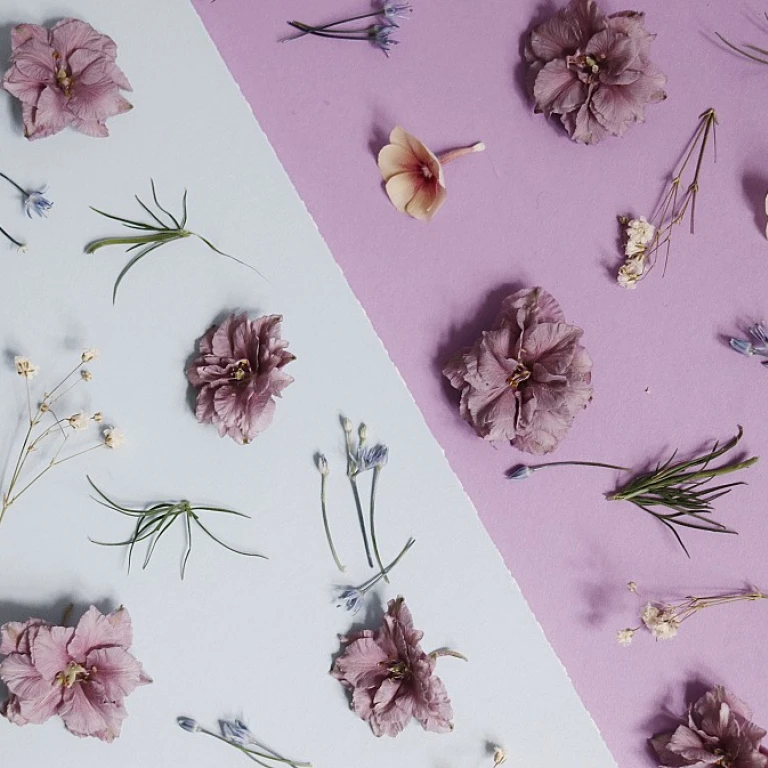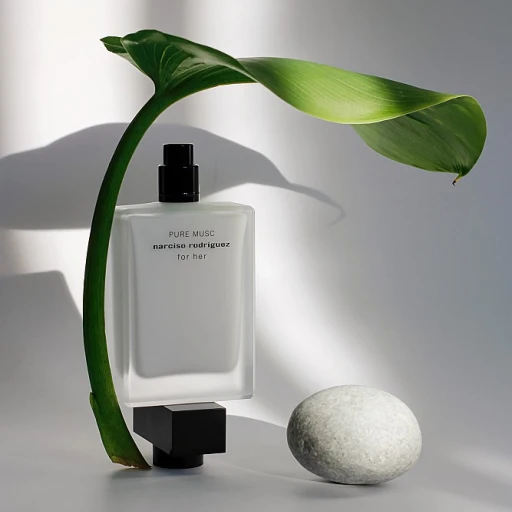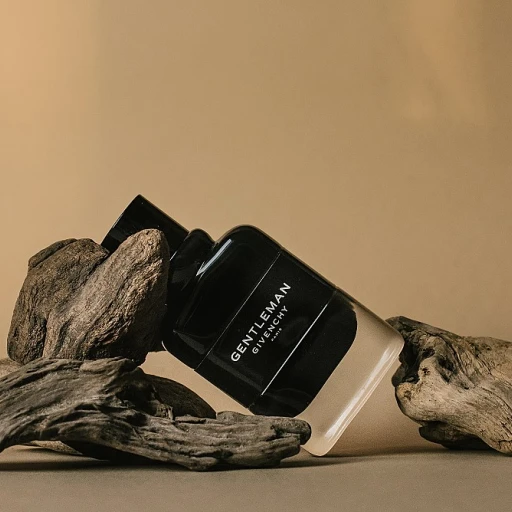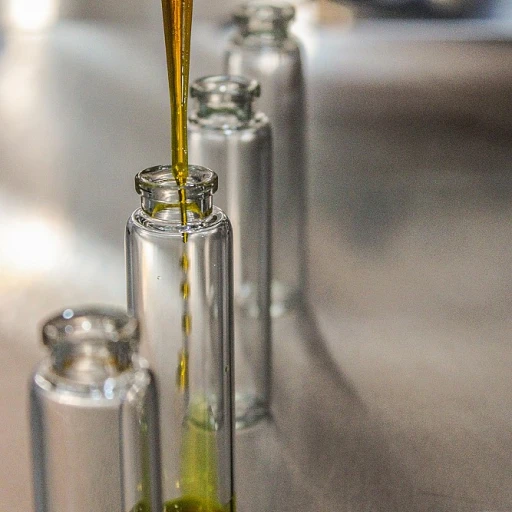
Understanding Base Notes
The Foundation of Fragrance
Base notes are the unsung heroes of the perfume world, providing the foundation upon which the entire fragrance is built. These notes are the longest-lasting elements in a perfume, often lingering on the skin for hours after the top and middle notes have faded. Understanding their role is crucial for anyone looking to master the art of fragrance blending.
Base notes are typically rich, deep, and enduring. They include scents like sandalwood, vanilla, and patchouli, which are known for their ability to anchor a fragrance. These notes are essential because they not only add depth and complexity but also influence how the perfume evolves over time.
The Role of Base Notes in a Perfume's Lifecycle
In the lifecycle of a perfume, base notes emerge after the initial burst of top notes and the more prominent heart notes have dissipated. This gradual transition is what gives a fragrance its unique character and longevity. The interplay between top, middle, and base notes is what creates a harmonious blend that captivates the senses.
For those interested in the historical aspects of fragrance blending, the techniques used by ancient Middle Eastern dynasties offer fascinating insights into how base notes have been utilized throughout history. Ancient mystery unearthed reveals how these early perfumers mastered the art of blending to create scents that have stood the test of time.
As you delve deeper into the science behind blending and the techniques for choosing the right base notes, remember that the foundation you lay with these enduring notes will ultimately define your signature scent.
The Science Behind Blending
Exploring the Complexities of Fragrance Blending
Blending base notes in perfume requires a deep understanding of the complex science behind fragrance creation. The art of blending not only enriches the perfume but also ensures harmony between various fragrance layers. These base notes, often made from rich essential oils like patchouli, cedarwood, and vetiver, serve as the foundation of a perfume, grounding the more volatile top and middle notes.
The chemistry involved in blending reveals the intricate dance between different fragrance components, where each note plays a pivotal role. As fragrances evolve, the initial burst of top notes gives way to the more sustained heart notes, ultimately drying down to base notes. This process requires an intimate knowledge of each oil’s evaporation rate and concentration to achieve a balanced scent profile.
The interplay between natural elements and synthetic compounds often determines the success of the fragrance. Essential oil blends are chosen based on their ability to complement both the base and top notes, ensuring a cohesive scent experience. For instance, lavender pairs well with warmer base notes like amber, enhancing the overall blend.
Tuning into the art of after shave balm can also provide insightful parallels in fragrance blending, offering another layer of exploration. Understanding how fragrance notes evolve over time and in different mediums can refine your blending techniques. To delve deeper into this alluring combination of scents, check out this fragrant journey.
Choosing the Right Base Notes
Selecting Harmonious Base Notes
Choosing the right base notes is crucial for achieving a well-rounded and enduring perfume. Base notes serve as the foundation of a fragrance, providing depth, richness, and longevity. To effectively blend base notes, it’s important to first understand their aromatic characteristics and how they interact with other notes.- Know Your Base Notes: Begin by familiarizing yourself with widely recognized base notes like sandalwood, vetiver, amber, and musk. These fragrances typically embody warmth and earthiness, perfect for adding depth to any blend. When paired with lighter top notes and dynamic middle notes, base notes can transform a perfume into a multi-layered scent.
- Consider Natural Elements: Essential oils such as patchouli, cedarwood, and labdanum are popular choices in the realm of natural fragrances. Aromatherapists and perfumers alike lean towards these earthy oils because they meld seamlessly with a variety of scent families. For instance, patchouli combines well with tea tree or lavender, adding a grounding effect.
- Balance with Middle Notes: The interaction between base and middle notes is particularly significant in the structuring of a fragrance. Middle notes, often referred to as heart notes, bridge the gap between top and base notes, harmonizing the overall scent profile. Consider middle notes like jasmine or rose when aiming for a floral allure.
- Test Oil Blends: It's crucial to experiment with different oil blends. Create small batches and use scent strips to evaluate how the base and other notes evolve over time. This practice of fragrance blending allows for refinement, ensuring the final scent remains true to your vision.
- Complement with Top Notes: When deciding on top notes, consider how they will interact with the chosen base. Citrusy or herbal top notes like bergamot or basil can energize and refresh a blend, making the transition smoother and more appealing.
Techniques for Blending Base Notes
Mastering the Craft of Blending Base Notes
Blending base notes in perfume is an art that requires a nuanced understanding of fragrance composition. These notes are the foundation of any scent, providing depth and longevity. To achieve a harmonious blend, one must consider the interaction between base notes and other fragrance notes, such as top and middle notes.
Layering for Depth and Complexity
When blending, start by identifying the primary base notes you wish to highlight. Common choices include sandalwood, patchouli, and vetiver. These essential oils provide a rich canvas upon which other notes can be layered. By carefully selecting complementary middle and top notes, you can create a well-rounded fragrance that evolves beautifully over time.
Balancing with Middle and Top Notes
Balance is key in fragrance blending. While base notes provide the foundation, middle notes, often referred to as heart notes, add character and complexity. Consider using floral or herbal middle notes like lavender or tea tree to bridge the gap between the base and top notes. Top notes, such as citrus or light florals, introduce the fragrance and should be used sparingly to avoid overpowering the blend.
Experimenting with Oil Blends
Experimentation is crucial in finding the perfect blend. Use scent strips to test different combinations of essential oils. This method allows you to adjust the proportions of each note until you achieve the desired scent profile. Remember, patience is essential; some blends may take time to mature and reveal their true character.
Utilizing Natural and Synthetic Ingredients
Incorporating both natural and synthetic ingredients can enhance the complexity of your perfume. Natural essential oils offer authenticity, while synthetic compounds can provide stability and longevity. A well-crafted blend will utilize the strengths of both to create a signature scent that is both unique and enduring.
By mastering these techniques, you can overcome common challenges in fragrance blending and create a perfume that is truly your own.
Common Challenges and Solutions
Overcoming Blending Challenges
Blending base notes in perfume creation is a delicate process that requires careful consideration and skill. Even seasoned perfumers encounter challenges, but understanding common issues can lead to effective solutions.- Unbalanced Fragrance: Achieving a harmonious blend of base, middle, and top notes is crucial. If the oils create an overpowering base note, it can overshadow the other fragrance elements. To address this, incrementally adjust the proportions, and remember, sometimes less is more. Experiment with variations to achieve a cohesive blend.
- Incompatible Scents: Not all notes blend well together. Some essential oil blends may clash, resulting in an unpleasant scent. It's important to have a deep understanding of fragrance compatibility. A blend of lavender and tea tree essential oils works well with many compositions, whereas others may cause disharmony. Consider using scent strips to test combinations before committing to a full blend.
- Scent Longevity: Base notes are critical for the longevity of the perfume. If the scent fades too quickly, assess the concentration of base oils used. Natural resources like sandalwood and vetiver tend to provide lasting scents. Revise your oil blend ratio to include more high-longevity notes if needed.
- Olfactory Fatigue: Constant exposure to fragrances can lead to desensitization. Take regular breaks to allow your olfactory senses to reset, so you're able to detect and adjust scent nuances accurately.
Creating Your Signature Scent
Crafting a Personal Fragrance Identity
Creating your signature scent involves artfully weaving a tapestry of diverse fragrance notes. This unique composition reflects both personal taste and olfactory expertise. You'll want to ensure that your chosen oils and fragrance notes balance well across top, middle, and base notes for a harmonious blend.
Starting with the foundation, your base notes will anchor the scent, offering longevity. Consider essential oils like sandalwood, patchouli, or vanilla, which not only last on your skin but also blend seamlessly with a variety of top and middle notes.
Next, introduce your middle notes, or heart notes, which harmonize the scent blend, allowing base and top notes to transition smoothly. Fragrances such as lavender or rose are excellent selections that pair well with a multitude of different scent families.
The final touch in your fragrance blend comes from selecting top notes, which impart the first impression. Citrus oils or light florals create an initial uplift, ensuring the scent captures attention right from the start. Remember, the art of blending requires patience and precision, melding these notes into a cohesive, alluring perfume.
Creating a signature scent also involves iterations. It's an exploration process to discover the perfect balance that resonates with your personal aura. Regularly using scent strips can be a practical way to test your blends, ensuring the perfume maintains integrity over time.
By integrating the science behind blending and understanding how different fragrance notes interplay, you can overcome common challenges and craft a unique perfume composition that stands the test of both time and personal expression.













